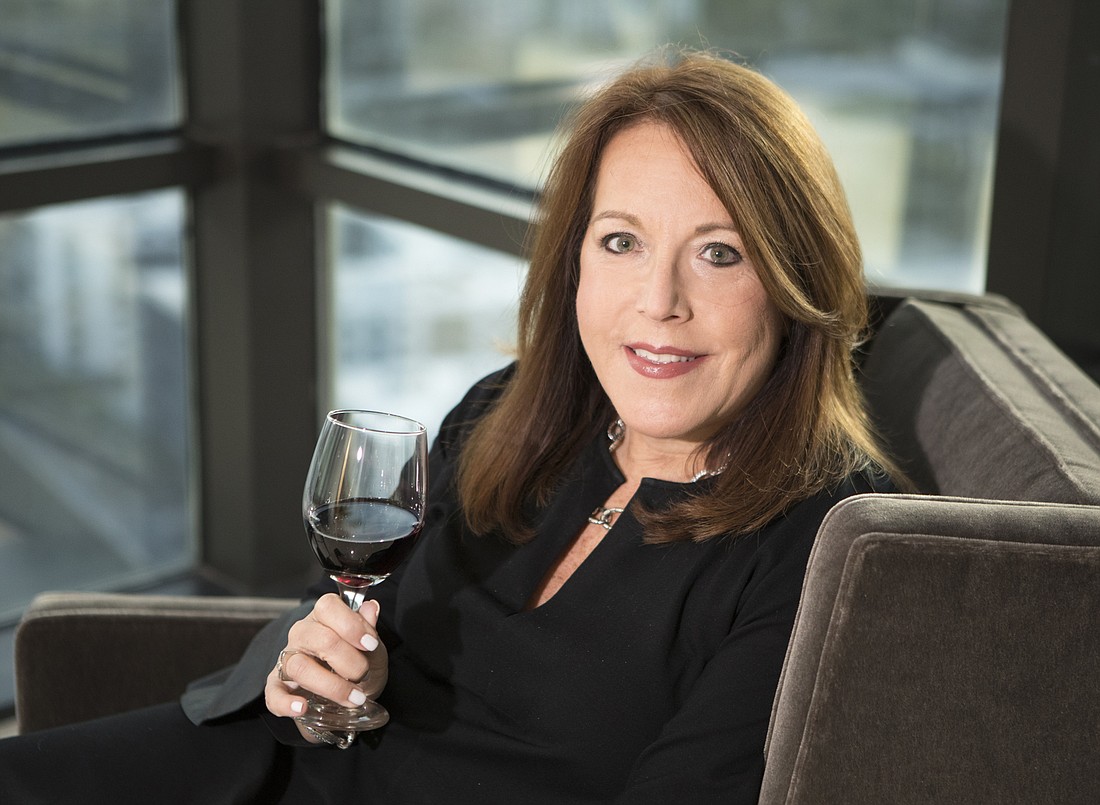- April 22, 2025
-
-
Loading

Loading

EXECUTIVE: Lori Rabinowitz, director of marketing and business development at Trenam Law in Tampa and St. Petersburg.
DIVERSION: Rabinowitz, 58, has been a certified sommelier for nearly a decade. In 2007, while living in South Florida, she noticed a lot of wine bars popping up. She began to frequent them with friends and colleagues from her previous law firm in Fort Lauderdale. Two years later, having discovered a new appreciation for wine in all its varieties, she enrolled in a sommelier certificate course at Le Cordon Bleu College of Culinary Arts in Miami.
COMMITMENT TO LEARNING: To get her advanced sommelier certification, Rabinowitz had to attend an all-day course every Saturday for six weeks — but that’s just a fraction of the training required to become a master sommelier. “I’ve heard it's much more difficult than passing the bar exam,” she says, adding there are only about 140 master sommeliers worldwide. “That’s something I’ll do in my next lifetime,” she adds, laughing. To be a master sommelier, “you have to be in the business — you have to live and breathe wine.”
WINE IN THE WORKPLACE: Rabinowitz has brought her passion for wine into the office. She created Wine Down Wednesday, a networking event for Trenam’s lawyers and clients, both prospective and current. On the last Wednesday of every month, Rabinowitz selects four wines from various regions to showcase. She gives a short presentation about each selection and then hands out cards containing tasting notes, approximate retail price and where to buy the wine locally. “It’s a good way to stay in touch with our contacts on a casual basis,” she says. “And not every wine is expensive — we run the gamut.”
PRICE POINTS: Speaking of dollars and cents, Rabinowitz says the so-called “quality” of a wine has little to do with its price tag. The economics of wine can be misleading, so understanding how cost relates to quality is a key topic in her education as a sommelier. For example, “it’s costlier to handpick grapes vs. machine picking,” she explains. “In learning about wine, you learn about viticulture, which is the farming of grapes, as well as viniculture, the making of wine," adds Rabinowitz. "But you also learn about the selling and marketing and branding.” Many vintners, she adds, will make wines where pricing has more to do with the process of making the wine and less with the winery’s reputation. “It’s a unique industry in that you can enter at a very high price point,” Rabinowitz says.
IN GOOD TASTE: “People (are) always asking me the question, ‘What's a good wine?’” Rabinowitz says. “And my answer is, ‘If you like it, it's a good one.’” In other words, she’s not a wine snob, but without offering any specifics, she says there are some wines she flat-out refuses to drink — though price has little to do with it. “There’s a $7 bottle of wine I’ve been drinking from Trader Joe’s, and I think they also carry it at Total Wine. It’s a rosé from France, and it’s just wonderful.”
WHAT’S ON THE MENU: While little gives her more pleasure than discovering exciting new wines from unexpected places, Rabinowitz says lately she’s been gravitating toward pinot noirs from Oregon and so-called Super Tuscans. The latter are blends made from grapes, such as sangiovese, grown in Tuscany, the famed wine-producing region of Italy. “They’re totally different, and that’s why I’m loving it,” she says. “It could change at any moment, but that’s what I’m drinking a lot of [right now].” If she could drink wine from only one country, she says, it would be Italy.
AGAINST THE GRAIN: Rabinowitz also has no qualms about indulging in lighter, less critically acclaimed fare like chardonnays and rosés. In sunny Florida, she says, “There’s just nothing like a rose in the afternoon, sitting poolside … it’s so refreshing.” In Rabinowitz’s opinion, chardonnay, as a category, has been unfairly criticized because of how it’s been made by U.S. vintners. “People say ‘ABC’ — anything but chardonnay,” she says. “It’s gotten a bad rap because Napa Valley has mass-produced it to a fault. They age it in American oak and malolactic acid, which makes it kind of buttery or creamy. People don’t seem to like the buttery, oaky taste, and they think that’s what chardonnay is, but it’s not. A white Burgundy, from France, is a chardonnay, and it tastes totally different.”